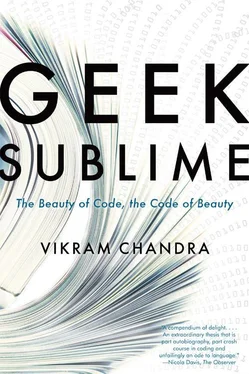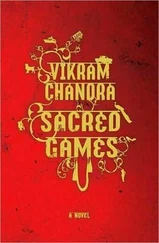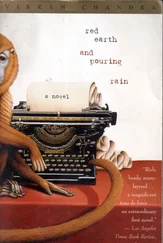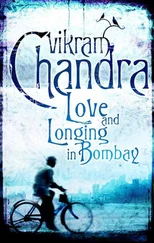All this was satisfying enough, but dhvani —or at least resonance, reverberation — was crucial to the structure of the novel I was writing. The book’s shape followed what contemporary literary theorists call a “ring composition,” in which the ending of the narrative somehow joins up with the beginning, forming a circle. A ring composition is often used as a frame, within which further rings are embedded. Elements within a ring often reflect back on each other to form a chiastic structure, A-B-B-A, or A-B-C-B-A. Often, language or tropes or events are repeated, each time somehow changed. “In ring composition repetitions are markers of structure,” the anthropologist Mary Douglas writes. 37Ring composition is a structure used all over the world, in narratives as varied as the Bible and mediaeval Chinese novels, she tells us, “so it is a worldwide method of writing.” 38She adds that “ring composition is extremely difficult for Westerners to recognize. To me this is mysterious.” 39
In India, ring composition is a standard architecture, found prominently in epics like the Ramayana and the Mahabharata , in poems, in the Rig Veda, and in Panini’s grammar. 40When I was writing my first book, I had never heard the phrase “ring composition,” but the method and its specific implications and techniques came readily to hand because — of course — I had seen and heard it everywhere. What I wanted within the nested circles or chakras of my novel was a mutual interaction between various elements in the structure. That is, for one chapter to act as the transformed reflection of another, for a nested story to act as an echo for another story nested within itself, and so on. Each of these connections would — I hoped — act as a vibration, a spanda , and all of them would come together in a reverberation, a dhvani —perhaps not quite in the sense that Anandavardhana used the word, but a dhvani nevertheless — a hum that would be alive and full and endless.
I didn’t exactly plan this architecture, sketch it all out before I began. I knew the general outline, and groped and felt my way into the specifics. I didn’t plan it because I couldn’t have; the unfolding of the story, all the stories, comes from the tension between intention and discovery. There are unbelievably delicious moments when you feel the pieces falling into place, when you find harmonies and felicities and symmetries that you can’t remember constructing, and at those times you cannot help becoming a mystic, believing that you are after all a little bit of a kavi , a seer of some sort.

“We see,” David Shulman writes:
reflections almost everywhere we look in South Asia, in all artistic media and, perhaps above all, in ritual forms … One level — verbal, rhythmic, sonar, or semantic — may be superimposed, with varying degrees of completeness and precision, on another. In effect, two relatively independent relational systems may thus coincide … Correspondence and coincidence of this sort [stem from] the impulse to reconnect and recompose. 41
Shulman is an American who teaches in Jerusalem, one of those many astonishingly knowledgeable non-Indian Indologists through whom I’ve learned much about my tradition. The global engine of academia is — for the moment — dominated by Western money and scholars, and Indians can get very prickly about being once more subjected to powerful foreign gazes. Tempers have flared over interpretations of Indian history, religion, and metaphysics. But vigorous debate has always been the preferred Indian mode of discovery, and perhaps these arguments too are a kind of mirroring, a reconnection. The world is a web, a net, as is each human being nested within the world, holding other worlds within.
Shulman writes that in India, reiterations and ring compositions
speak to a notion of reality, in varying intensities and degrees of integrity, as resonance, reflection, or modular repetition understood as eruption or manifestation ( āvirbhāva ) from a deeper reservoir of existence, a restless domain driven by the undying urge to speak ( vivakṣā ). 42
Language itself wants to speak. In speaking, there is pleasure, and by speaking, knowledge is created, and thus the world we know. “Language cuts forms in the ocean of reality,” the Rig Veda tells us. 43This is why grammar— vyakarana —is the science of sciences.

At the beginning of Red Earth and Pouring Rain , a young man picks up a rifle and shoots a monkey. The monkey lives, and when he regains consciousness he finds a typewriter and begins typing. He reveals that in a past life he was a poet who abandoned poetry for revolution. Now he tells — or types — the story of this long-ago life.
The monkey will live as long as his audience finds pleasure in his stories. He transforms memory into story, and gives delight so that he may live.

Abhinavagupta tells us that his teacher said, “ Rasa is delight; delight is the drama; and the drama is the Veda,” the goal of wisdom. 44
8 MYTHOLOGIES AND HISTORIES
The privileging of pleasure as a mode of knowledge has an ancient pedigree in India, particularly within the many streams of Tantra. “Tantra” derives from the root tan , to expand or stretch, and literally means “extension” or “warp on a loom.” At its simplest, the word can just mean “handbook” or “guide,” and so not all texts with “Tantra” in the title are Tantric — the Panchatantra is a collection of animal fables. There is no one practice or ideology or cosmology that we can identify as “Tantric”—there are monist Tantrics and there are dualist Tantrics. There is Hindu Tantrism, Buddhist Tantrism, even Jain Tantrism. So what is Tantrism? Attempts at definition have resulted in expanding lists of typical characteristics; one scholar notes six identifiers, another eighteen. At the very minimum, one would note that Tantric lineages, transmitted through gurus, use ritual practices, bodily disciplines, and social norms that deviate from Vedic orthodoxy, all in the service of ultimate spiritual liberation and worldly attainment. And, as Sanjukta Gupta puts it, “Tantric sādhāna (practise, discipline) is a purely individual way to release accessible to all people, women as well as men (at least in theory), householders as well as ascetics.” 1
Most scholars would date the rise of Tantric systems to the middle of the first millennium of the Common Era. 2There is much evidence of the commingling of elements taken from Vedic philosophies and desi rural or tribal traditions. Hugh B. Urban says about the Tantra centred on the shakta-pitha or “Seat of Shakti” at the Kamakhya temple:
The Assamese tradition is by no means a simple veneer of Hinduism slapped onto a deeper tribal substratum. Instead, it is the result of a far more complex negotiation between the many indigenous traditions of the northeast and the Sanskritic, brahmanic traditions coming from north India that resulted in what is among the oldest and most powerful forms of Tantra in South Asia. 3
The eponymous Shakti worshipped at Kamakhya is the Renowned Goddess of Desire. Inside the temple, “Kamakhya is represented not by any human image, but by a sheet of stone that slopes downwards from both sides, meeting in a yoni -like depression.” 4The yoni is the vulva; the goddess is believed to menstruate three days a year, during which time the temple is closed. “On the fourth day after her menstruation, the temple doors are reopened, and red pieces of cloth representing the bloody menstrual flow are distributed to the thousands of pilgrims who thereby receive the power and grace of the goddess.” 5A majority of these pilgrims are women.
Читать дальше













